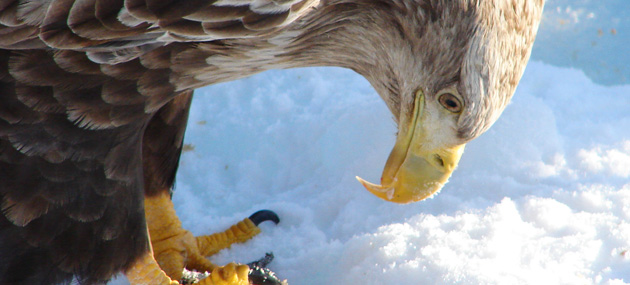Japanese Macaque Macaca fuscata
 Order: Primates
Order: Primates
Family: Cercopithecidae
Identification: A largely terrestrial and partly arboreal primate varying in coat colour from grey to dark grey-brown, somewhat paler from the chest to the belly and on the inside surfaces of the limbs.
The face is mostly bare, especially around the eyes, but with some sparse dark hairs on the cheeks and muzzle; the buttocks are bare. Both face and buttocks are red, the intensity varying individually, seasonally and depending on emotional or reproductive state. The tail is extremely short, and often not noticeable in adults. The hands are human-like, but with a very much shorter thumb.

Two subspecies: M. f. fuscata and M. f. yakui. The latter is smaller, stockier, more vocal, and with darker grey-brown fur. 
Similar Species: See also Taiwan Macaque and Rhesus Macaque, both of which have been introduced locally.
Size:
Male Head and body 53-60 cm; Tail 8-12 cm; Weight c10-18 kg
Female Head and body 47-55 cm; Tail 7-10 cm; Weight c8-16 kg
Status and Distribution:
Endemic. M. f. fuscata ranges from northernmost Honshu through Honshu, Shikoku and Kyushu, and in isolation M. f. yakui occurs only on Yakushima (Yaku Is.) south of Kyushu. Populations in the Tohoku (northern region) of Honshu are isolated and scattered, but those from central Honshu westward are more widely distributed.
Ecology:
Closely associated with broad-leaved forests (both deciduous and evergreen), and ranges from lowlands to mid-elevations in the mountains of Honshu. A social species living in multi-male and multi-female groups of from ten or so to more than 100. Individual animals encountered are typically males living alone. Group sizes and home ranges vary considerably depending on the habitat, from 1~25 km2, but with larger groups in smaller areas in broad-leaved evergreen forest than in broad-leaved deciduous forests. Groups have a “boss” male, several subsidiary males, a hierarchy of females, dominated by an alpha female, and their offspring.

Diurnal and omnivorous. The diet includes both plant and animal matter, but plant matter forms the bulk of the diet. Foods taken from the forest, both from the ground and from in the trees, include: bark, buds, leaves, fruits, nuts, invertebrates and small vertebrates. They will also forage out into agricultural land where they take a range of crops, making them agricultural pests in some areas.

The life span is up to 25 years, with males reaching sexual maturity at about six years old and females at five. Mating typically occurs during autumn and winter; gestation is approximately 170 days, with most births occurring during spring and autumn. Females typically give birth once every two or three years to a single youngster, only very rarely producing twins.

The animals thick coat and its ability to survive on a poor diet of tree bark and buds allow it so survive even in the northernmost parts of Honshu and in the mountains of central Honshu, where deep snow is the norm during winter. The name “Snow Monkey” is widely applied, because of its winter environment, but that name has, more recently, become more specifically associated with the macaques living in the area of Jigokudani in Nagano Prefecture, famed for their behaviour of soaking in a hot pool that has been provided for them. They spend part of each winter’s day in the narrow valley close to the pool and many of the females and their offspring spend time in the pool. This location provides excellent opportunities for observation and photography at close range.

To find out more about the Japanese Macaque please follow this link.

